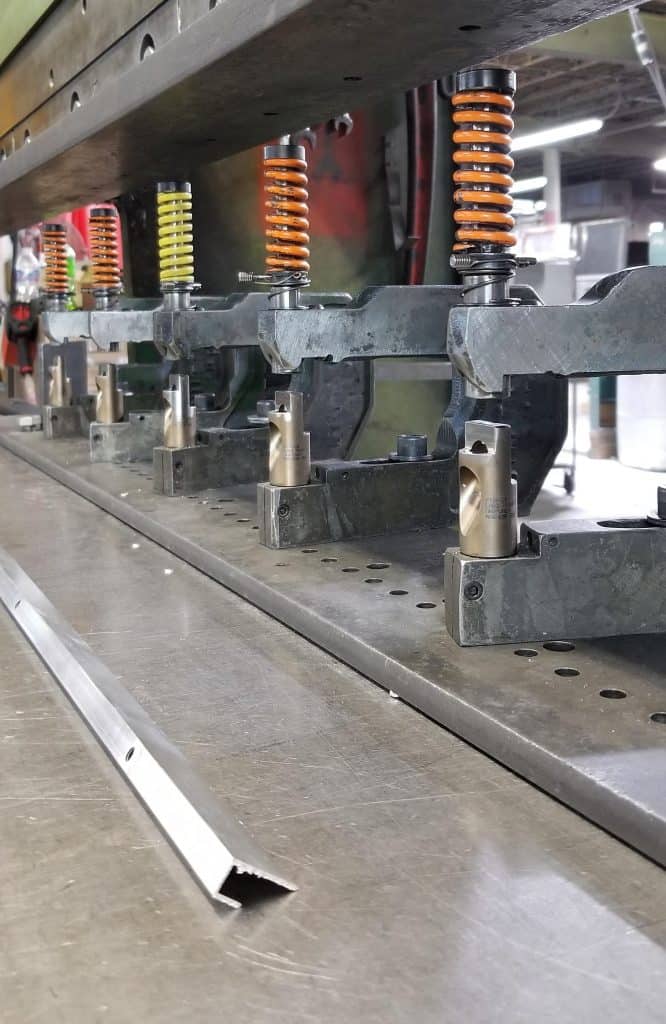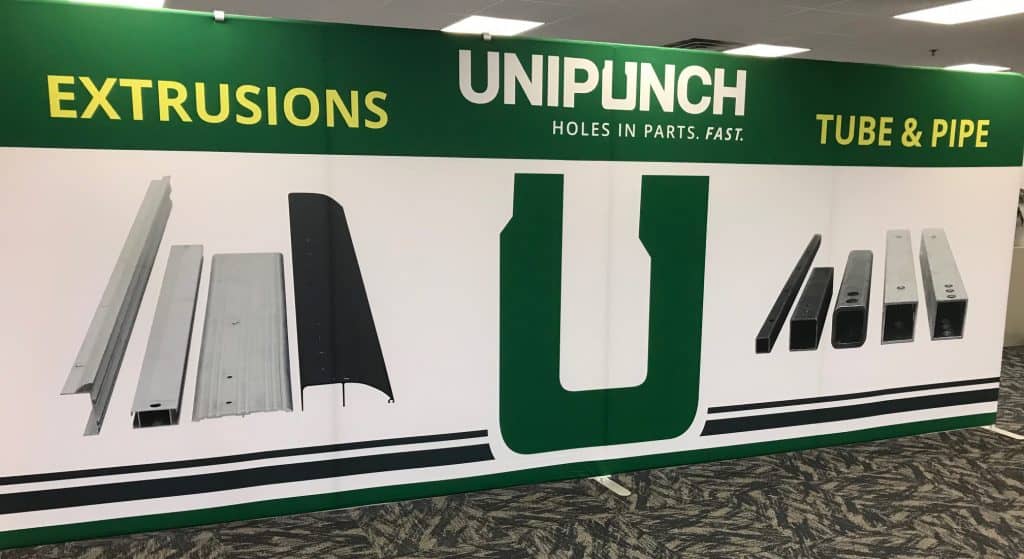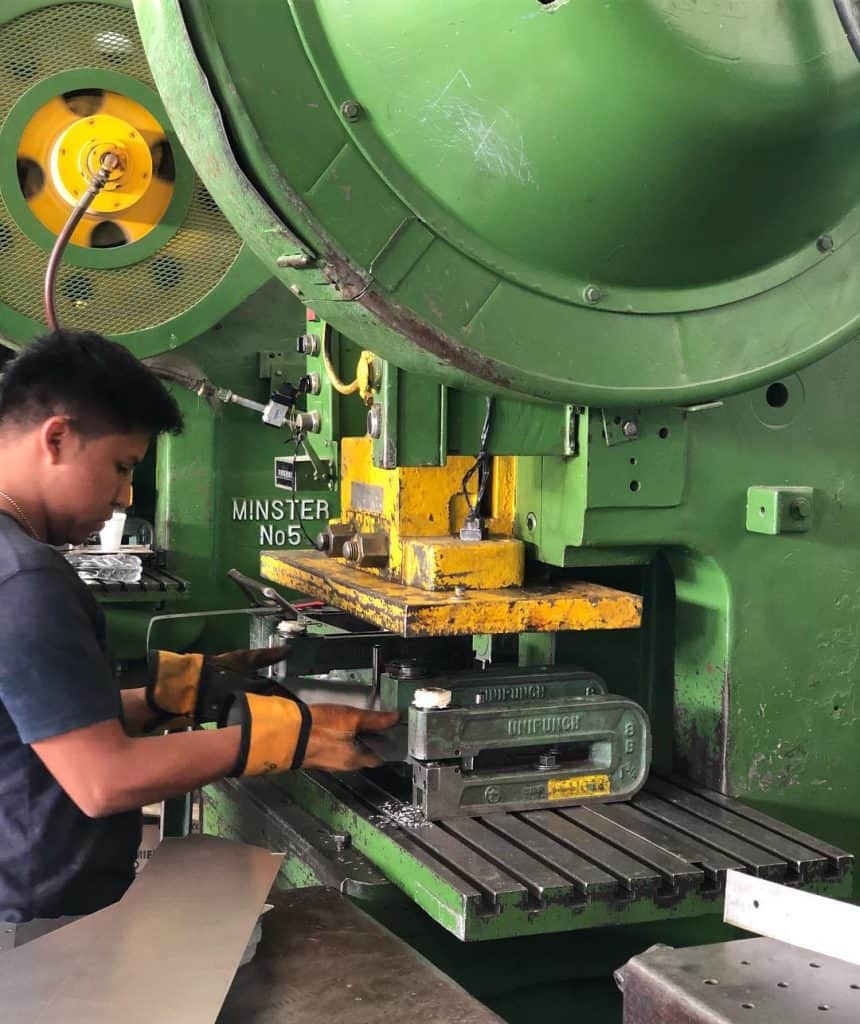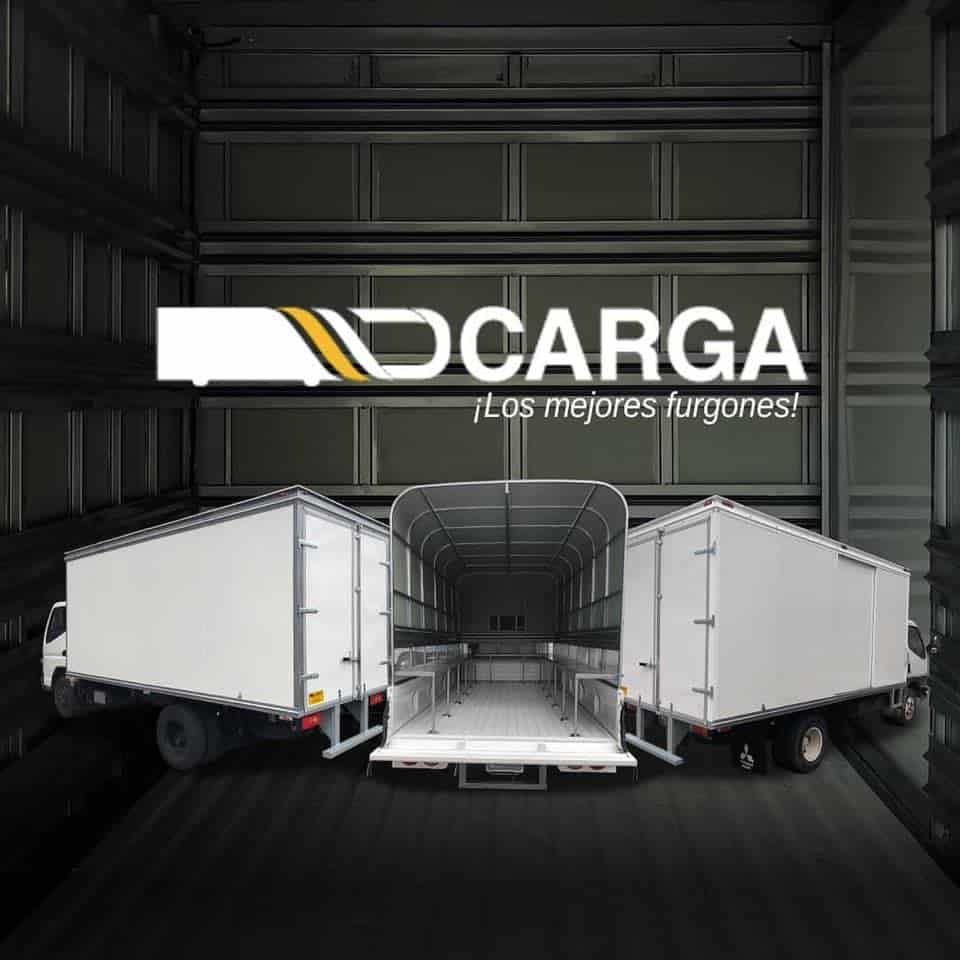Punching Holes in Aluminum J Channel
Lansing Housing Products needed to make holes in a small J channel. Drilling was time consuming and not accurate enough. They contacted UniPunch and the engineering team designed a punch and modified pedestal die to fit into their part.
The cycle time with the UniPunch system is only 10 seconds. And the punched holes are clean and on-center, maintaining the tight tolerances that Lansing Housing Products requires for installing their child safety screens.

Visit us at FabTech
Meet the UniPunch team at Booth #A3540!
Have a project to discuss? Stop by and talk to one of our engineers.
FabTech
McCormick Place, Chicago, Illinois
- Monday, November 11th 10am – 6pm
- Tuesday, November 12th 9am – 5pm
- Wednesday, November 13th 9am – 5pm
- Thursday, November 14th 9am – 3pm

Manufacturing cargo trucks with UniPunch
A manufacturer of cargo vans and truck bodies, DeCarga Furgones, sent us the photo below of their UniPunch tooling in operation. The caption reads “The best cargo vans require the best equipment and the best tooling.

Fabricar los mejores furgones requiere tener la mejor maquinaria y utilizar las mejores herramientas!
#LosFurgonesSonDeCarga #Unipunch

DeCarga Furgones’s cargo trucks
Punch holes with UniPunch
Use UniPunch tooling to punch holes in extrusions, tubing, structural parts and more.
- Save time and money.
- Make uniform parts.
- Be flexible.
How can we help you make holes faster?
Less Time… More Parts
A manufacturer of animal enclosures was punching flat bars one hole at a time with an ironworker. It was time consuming and the hole-to-hole accuracy was difficult to maintain. He started punching all of the holes in one hit with the UniPunch system and went from making 60 parts per hour to 600!
Watch the video to learn more:
They’re Not Just for Bending Anymore!
 Press brakes are an important resource for punching holes fast.
Press brakes are an important resource for punching holes fast.
One of the most common applications is punching a line of holes using UniPunch tooling on a strip template in a press brake.
For recurring jobs, UniPunch tooling can stay assembled on the template and the whole assembly can be removed from the press and put on a rack for when that hole pattern is needed next.
Read More
How to Reduce Tonnage?
There are a variety of ways to reduce the required press tonnage.
- Use Tonnage Compensator Caps – Stagger the punch length so that the punches pierce the material at different intervals
- Add Punch Shear – A shear angle ground onto the punch tip reduces the load or tonnage unlike flat faced punches
- Use correct die clearance – This results in a balance of punching force, good hole quality and increased tool life
- Sharpen punches & dies often
Why Die Clearance Matters?
Proper clearance between the punch and die is essential for piercing a well-made hole efficiently.
- Too much punch and die clearance results in more rollover deformation where the punch enters the material and a large burr on the die side.
- With proper clearance between the punch and die, there will be minimal rollover deformation around the hole where the punch enters the material. As the punch cuts through the material, it creates a region of vertical burnishing until the fracture line created by the punch meets the fracture line defined by the size of the die at which time the material breaks creating the hole. On the die side there will be a minimal burr.
Read More

